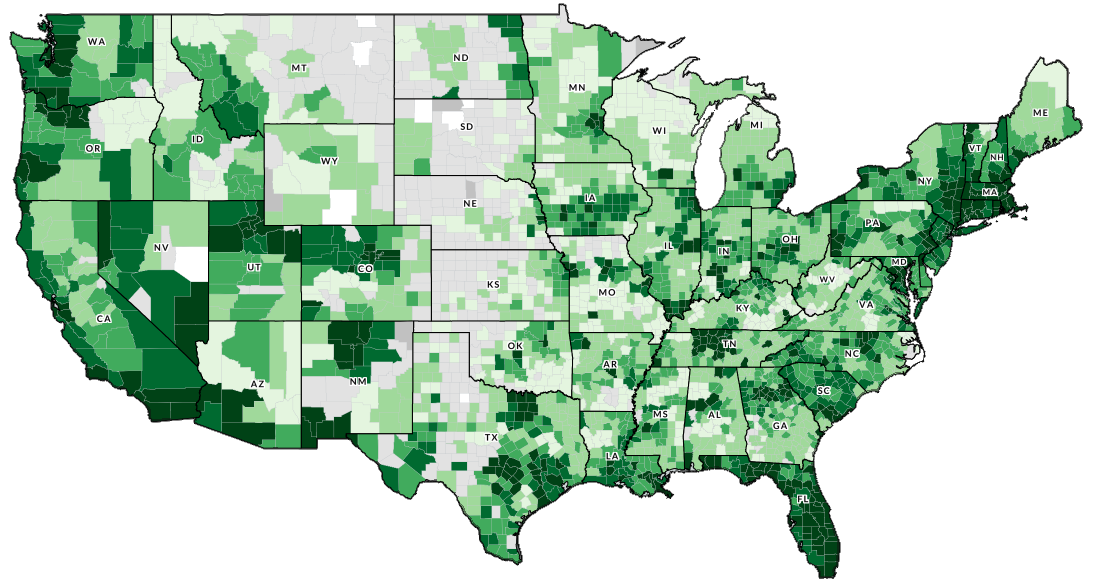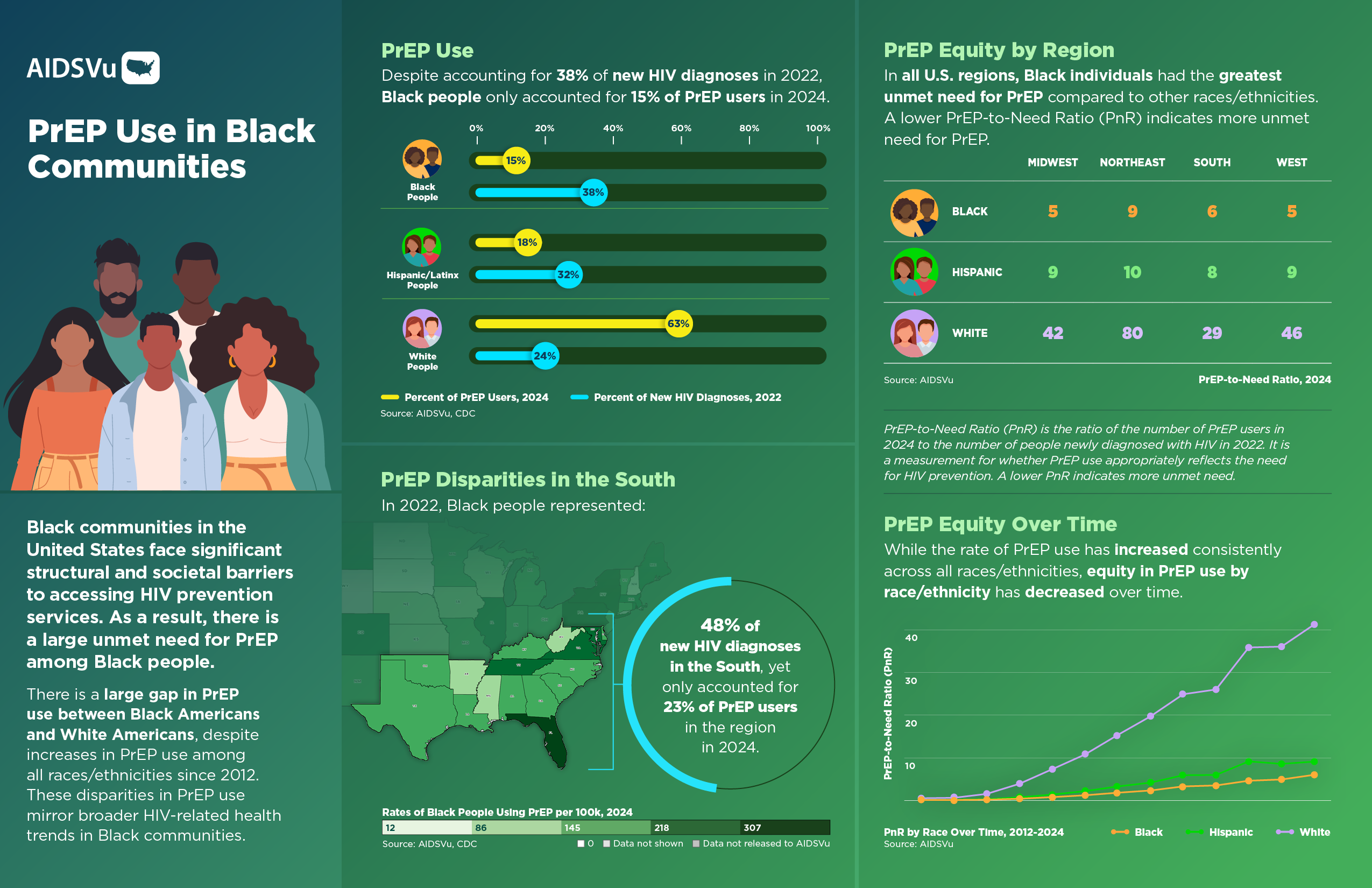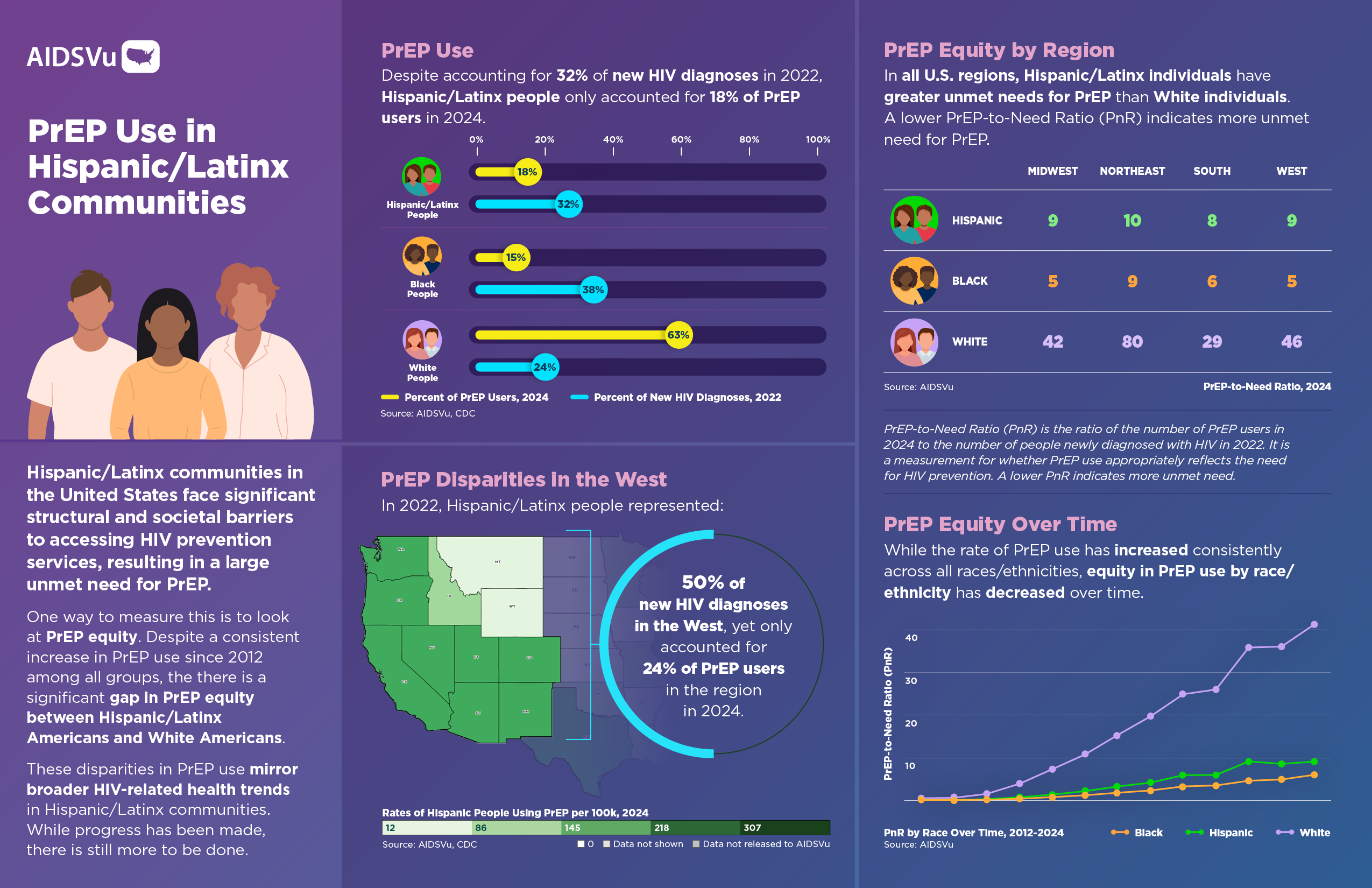PrEP Use by Race/Ethnicity

Prep
PrEP by Race/Ethnicity
Black Communities:
Black communities in the United States face significant structural and societal barriers to accessing HIV prevention services, including stigma and discrimination, systemic racism, access to affordable health insurance, medical mistrust, cultural barriers and bias in healthcare settings, homophobia and transphobia, and socioeconomic challenges like poverty, housing instability, and unemployment. These barriers and others contribute to the large unmet need for PrEP among Black people.
One way to measure this is to look at PrEP equity. Despite a consistent increase in PrEP use since 2012 among all groups, the gap in PrEP equity between Black Americans and White Americans remains wide.
These disparities in PrEP use mirror broader HIV-related health trends in Black communities. While progress has been made, there is still more to be done.
- Black people represent 39% of all new HIV diagnoses, but only accounted for 14% of PrEP users. In comparison, white people represent 24% of all new HIV diagnoses but accounted for 64% of PrEP users.
- In the South, there were only 5 Black PrEP users for every new HIV diagnosis among Black people. In comparison, there were 27 white PrEP users for every new HIV diagnosis among white people.
- Regionally, Black people made up 48% of new HIV diagnoses in the South in 2022, but only 22% of PrEP users in the South in 2023; in the Midwest, Black people made up 42% of new HIV diagnoses in 2022, but only 13% of PrEP users in 2023.
Hispanic/Latinx/Latine Communities:
Hispanic/Latinx/Latine communities in the United States face significant structural and societal barriers to accessing HIV prevention services, including language and cultural barriers in healthcare settings, access to affordable health insurance, medical mistrust, stigma and discrimination, homophobia and transphobia, and socioeconomic challenges like poverty, housing instability, and unemployment. These barriers and others contribute to the large unmet need for PrEP among Hispanic/Latinx/Latine people.
One way to measure this is to look at PrEP equity. Despite a consistent increase in PrEP use since 2012 among all groups, the there is a significant gap in PrEP equity between Hispanic/Latinx/Latine Americans and White Americans.
These disparities in PrEP use mirror broader HIV-related health trends in Hispanic/Latinx/Latine communities. While progress has been made, there is still more to be done.
- Hispanic/Latinx/Latine people represent 31% of all new HIV diagnoses, but only accounted for 18% of PrEP users. In comparison, white people represent 24% of all new HIV diagnoses but accounted for 64% of PrEP users.
- There is a greater unmet need for PrEP in Hispanic/Latinx/Latine communities than White communities in all regions of the U.S.
- In the West, Hispanic/Latinx/Latine people represented 50% of new HIV diagnoses but only represented 24% of all PrEP users.


